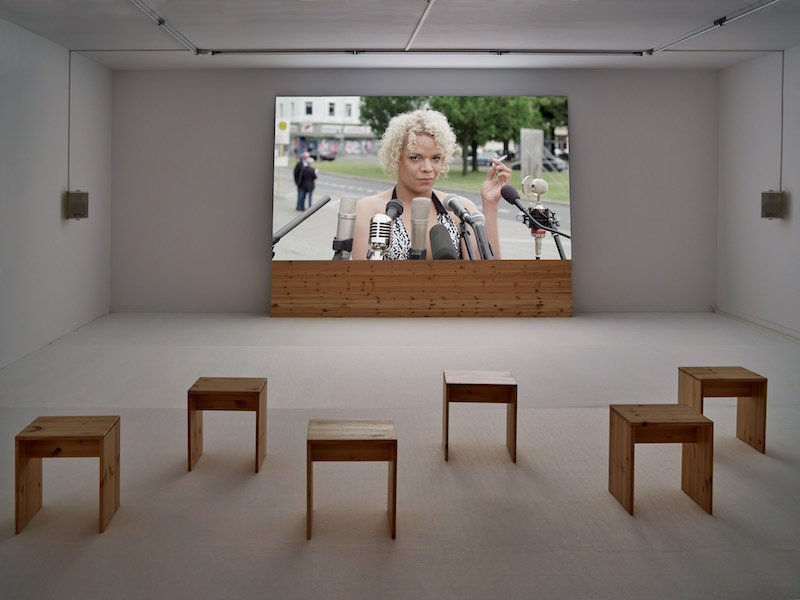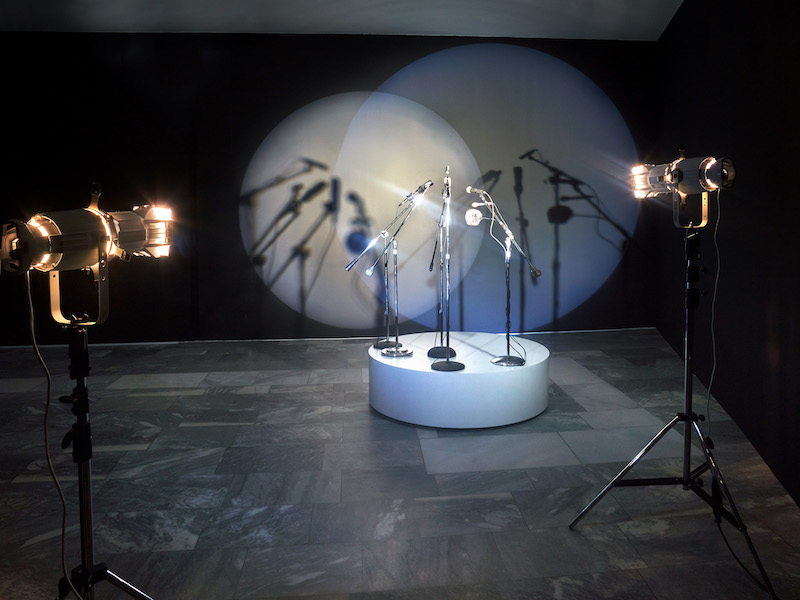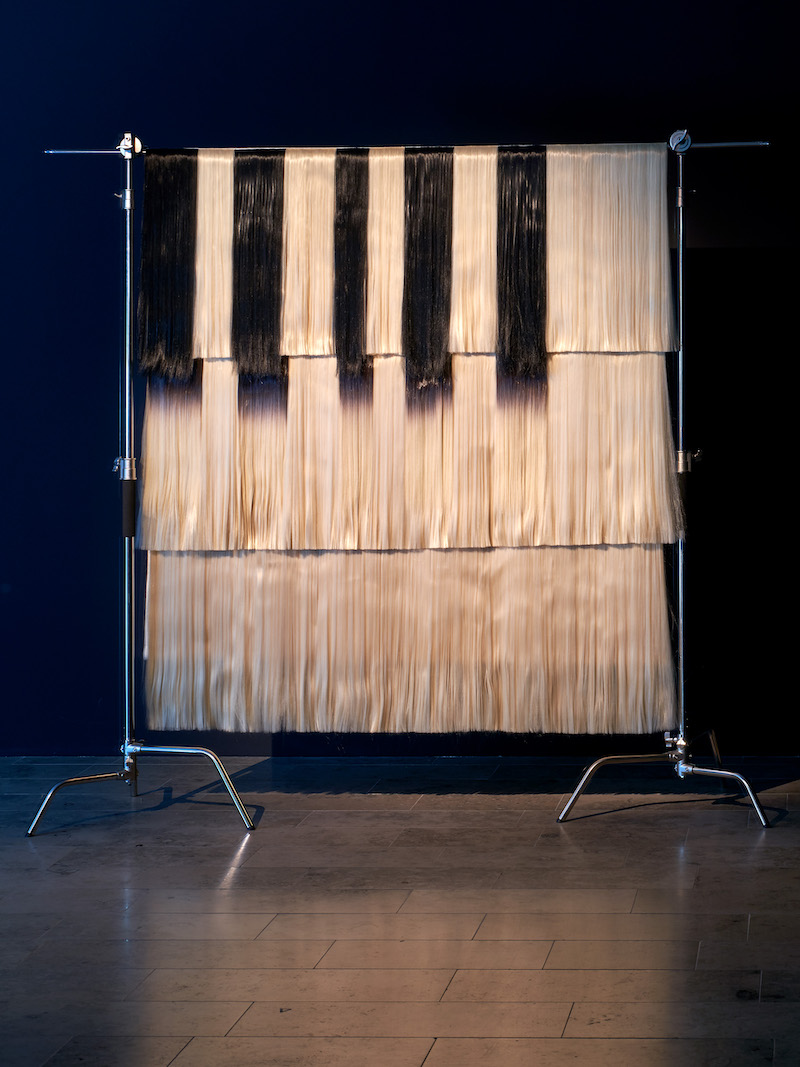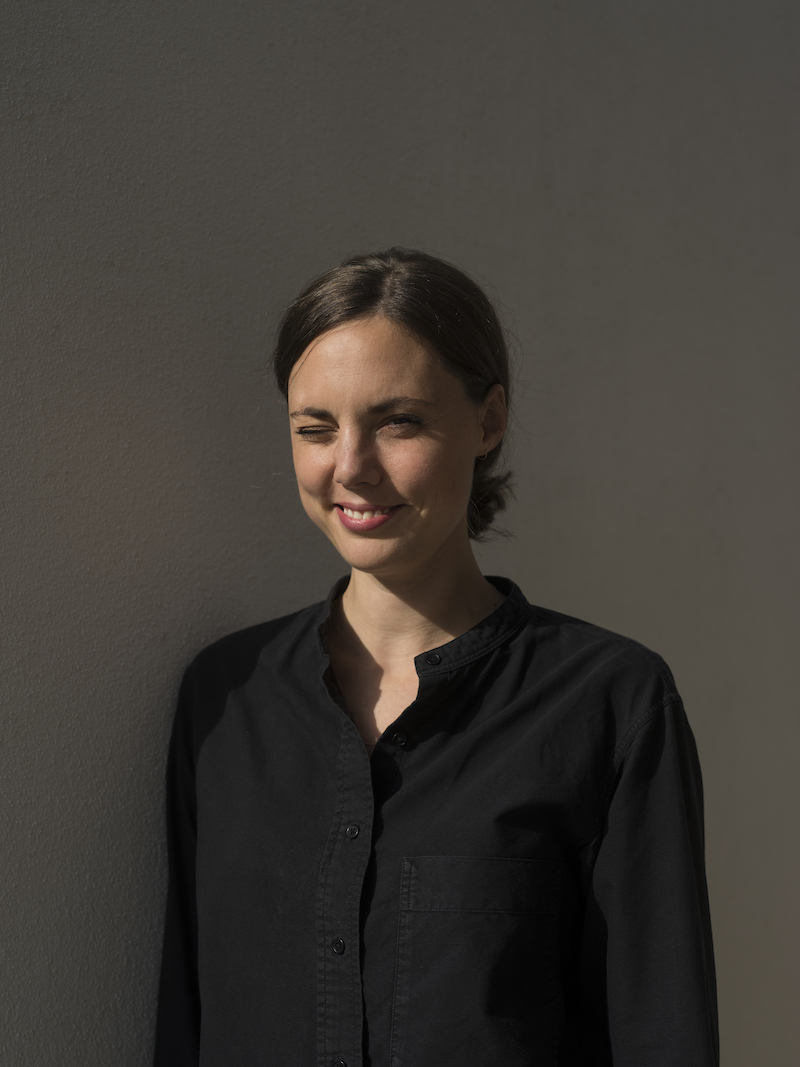Article by Mary Alexander // July 30, 2019
From March 2019 to April 2020, a program of exhibitions, performances and screenings has been and will continue to be shown at Julia Stoscheck Collection in Berlin and Düsseldorf under the title ‘horizontal vertigo,’ curated by Lisa Long, an art historian, writer and independent curator based in the Rhineland. Long completed her M.A. at the Center of Curatorial Studies at Bard College, New York and her B.A. in Art History and Musicology at the University of Cologne. As a curator, she is focused on the topics of historiography and representation and dedicated to destabilizing concepts such as objective reality and universal truth. She is also a founding member of ‘And She Was Like: BÄM!,’ an initiative which aims to increase awareness of feminist issues through collective, creative action.

Pauline Boudry/Renate Lorenz: ‘Silent’, 2016. Performance: Aérea Negrot // Photo: Alwin Lay
Long is particularly interested in time-based practices and promoting the visibility of artists engaged in feminist, queer and colonial critique. In the Berlin space’s latest exhibition, ‘ONGOING EXPERIMENTS WITH STRANGENESS,’ the artistic duo Pauline Boudry / Renate Lorenz presented theatrically conceived sculptural objects and time-based works that succeed in challenging established historical narratives and confining concepts of identity, categorization and meaning. Rather than reinforcing a binary mindset, the work on display suggests an intermingling inspired by plurality and non-totality, echoing the ambitions of Long’s exciting curatorial program.
Mary Alexander: As a curator, what kind of artistic practices are you drawn to?
Lisa Long: …definitely time-based practices. I am drawn to artistic practices that have a political impetus, in which the artists question histories, representation, identity, and embrace subjectivity. I am also drawn to practices infused with theory because theory, for me at least, is endlessly adaptable and can take a thought to a breaking point and that is exciting to me. More generally speaking, I love when I see or read something that changes my perspective and enables me to think about the world differently than I did before.
I am also fascinated by people who make art, their stories, the way they engage with their surroundings that then becomes visible in their art. When an artist is deeply engaged with issues they believe to be urgent in relation to the happenings of the world—in those moments art becomes necessary for them, for me, and for the rest of us. Last year I overheard someone at an opening in Germany say they didn’t think artists had a reason to make art any more, that there was nothing new to do, nothing to rebel against. I couldn’t disagree more.

Pauline Boudry/Renate Lorenz, ‘HE EAR R’, 2017 // Photo: Alwin Lay
MA: Is there a particular topic that you are dedicated to making an important conversation in the art world?
LL: Yes and no. Conversations evolve and have various degrees of urgency, so the importance of a conversation really depends on the context. I try to reflect on the given situation, the structures, the possibilities and limitations, and then act accordingly. I guess I see myself in a line of postmodern thought. I am critical about mono-perspectives, claims to objectivity, history with a capital H, restrictive categorizations, universalism. I think a lot about how systems of knowledge have been institutionalized and written, and how we can misuse and undo them. In art all these other kinds of relations can be proposed and explored, let’s see where that takes us. I hope to precipitate the renewed drive toward multiplicity, difference, and complexity.
MA: Your exhibition program ‘horizontal vertigo’ incorporates feminist, queer and decolonial critique into the curatorial framework at JSC. Why is that important to you and how do you see it unfolding throughout the program?
LL: These discourses are important to me because through them we can “come up against the world,” as Sarah Ahmed would say. I am a white, middle class woman in a certain position of power and I really want to make clear that my voice is only one of many. If I am critical of representation and the way art institutions represent artists, then I must find my own way to not perpetuate this form of representation. I do not want to speak about something or someone but with them. For this programming, I was looking for a framework or structure to work this way. That is where the writing and thinking of Trinh T. Minh-ha also entered the conversation. I did not propose an overarching theme because that would be restrictive. Instead, I found an underlying politics and this politics is feminist, it is queer, it is post- or decolonial. And, I believe that over time, because we are focusing on time-based art here, certain themes will evolve. They are, it’s quite exciting.

Pauline Boudry/Renate Lorenz: ‘Wig Piece (Whose Body? – Whose Thoughts?)’, 2017 // Photo: Alwin Lay
MA: Right, the entire programming for ‘horizontal vertigo’ is inspired by Trinh T. Minh-ha, who is an artist, writer, and filmmaker. I’m curious about Minh-ha’s concept of “non-totalness” from her essay ‘Cotton and Iron’ (1991) and how it relates to the work of Pauline Boudry / Renate Lorenz?
Lisa Long: “Non-totalness” is an approach—or even reality—that implies process, trial and error, reflexivity, particularity, and difference. Non-totalness highlights the interval, the transition from one state to another and holds that which is not said, has been forgotten or pushed out of the center at the same time. History, identity, and the self are non-total, so to say.
In the work of Pauline Boudry and Renate Lorenz un-presented histories and figures are called upon and transported into the present, thus new histories are written and made visible. In this case history is not something that is stuck in the past but is active and being reformulated in the present. Boudry / Lorenz also expose the frame of the camera, and in doing so we become aware of what falls outside the frame, what is not seen or heard. This for me quite literally implies a non-totality. But Boudry / Lorenz also claim a right to opacity—a claim made my philosopher Édouard Glissant in his ‘Poetics of Relation’ (1997)—and opacity means that certain things will remain hidden. This is a type of refusal but also a form of survival. You and I both have the right to be opaque to others no matter how strong their desire is to understand and illuminate our inner workings. Non-totalness acknowledges this opacity, which, to return to the question before, is an emerging theme across various exhibitions so far.

Lisa Long // Photo: Kirsten Becken
MA: Can you talk to us about any future curatorial projects you would like to realize?
LL: Well, currently I am working on the next two shows as part of ‘horizontal vertigo’. A.K. Burns will open a big solo exhibition in Düsseldorf in September, and WangShui will open during Berlin Art Week. Then there is also the accompanying screening program, featuring Sky Hopinka next. As you can tell, I am very much rooted in the present.
Exhibition Info
JULIA STOSCHEK COLLECTION
‘horizontal vertigo’
Exhibition: Mar. 31, 2019–Apr. 26, 2020
Leipziger Straße 60, 10117 Berlin, click here for map

























